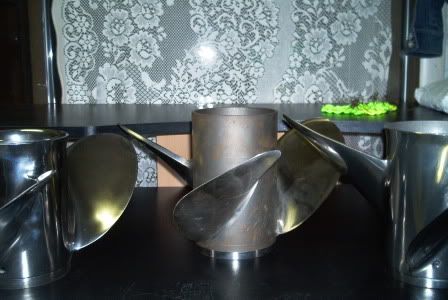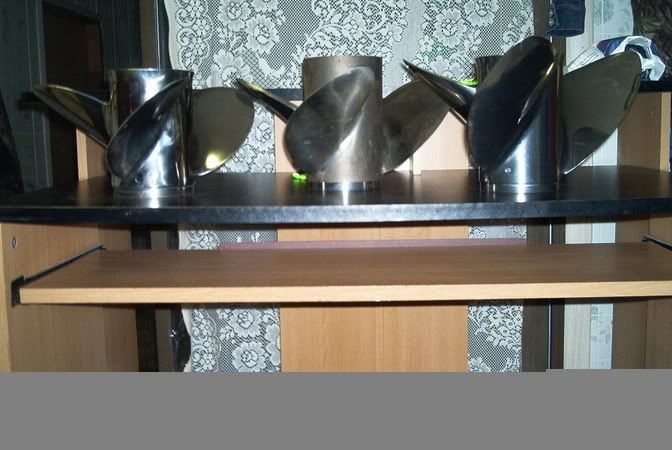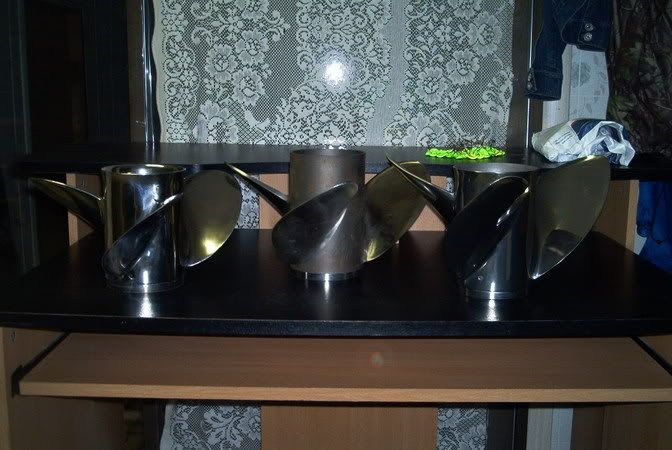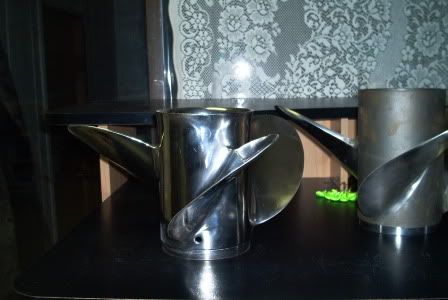Re: Bow Lifting Vs. Total Lifting Props???
I'll post a few pics, then try and describe how it works...<br />
<br />
<br />
<br />

<br /><br />Notice in the top 2 pics, from left to right, how the trailing edge of each prop blade goes from curl down(Turbo1), level(Turbo TXP), and curl up(Scorpion). Also notice how the blades go from cupped at trailing edge slightly to the entire blade being a cup. The TXP has a very thick trailing edge and near 90* to the hub.<br />The "Rake" is very obvious as to the change from left to right, and the pitch of the left prop (T1) is 1" more than the other 2....doesn't look that way, does it...<br />Your idea of the angle having something to do with it is very true, high rake usually means bow-lift, but by changing total cup and placement and even the amount of progression of pitch, they can pretty much design the prop for a combo effect-"over-all lift".<br />Bow-lift is more than just leverage, but in causing that leverage, it changes the trim angle required, which is actually less trim to get the bow up, so there isn't the same amount of downward "push" on the transom that there would be with a prop with say no Rake (blades 90* to hub). One of the problems with high Rake is they don't have much bite for reverse which indicates to me there is much more "total cup" of the entire blade, yet bites very hard from the center, out moving the max bite back as far as possible. A prop like the TXP stays hooked up with nearly half the prop out of the water on some applications, but the whole blade has twice the cup from leading to trailing edge than most high-end SS props have..<br />I have 2 Rakers here but they are so close to the Scorpion I didn't want to make the pics more confusing...the Raker happens to be one of my best all-around props I use and about all of the bow-lift I can handle. The Turbo Lightning has even more bow-lift and I've yet to compare the lightning to the Scorpion in the same pitch.<br />Look at some of the std sterndrives around...notice how the props are usually elephant eared and near 90* to the hub...the center of lift is closer to the transom which actually helps eliminate the downward force vs. lifting the transom even though they are sometimes called "Transom lifters".<br />I'm sure this is clear as mud.....wish I could draw on this, but this is the best I can do.
 <br />Thanks
<br />Thanks






















